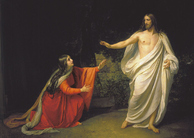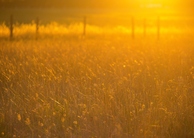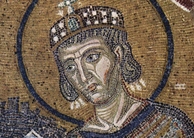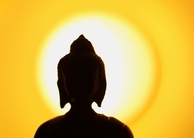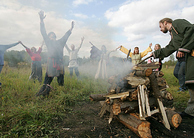The Influence of Social, Political, and Economic Factors on the Development and Form of Zulu Religious Activity in the 19th and 20th Centuries
By
2011, Vol. 3 No. 07 | pg. 2/2 | « By addressing the most pertinent of issues facing the Zulu people; upheaval, inadequacy and alienation, the new churches were effective coping institutions (Kiernan 1995:123-124). Yet it is vital to remember that although Christianity offered a whole new range of options, it served as an addition and not as a replacement to indigenous religious systems (Kirby 1994:64). The emergence of new movements is not the only way in which religious activity responds to change. Older religious activity also alters its form and develops to accommodate the change in society. In the case of the Zulu, indigenous religion also exhibited adaption to the challenges of the 19th and 20th century. The first example can be found in the role of the Isangoma (diviner). The Isangoma can be considered as a central element of the Zulu religious system. The function of the diviner is to ward off the ‘continuous threat against the community by invisible negative, destructive forces of life’ (Oosthuizen 1968:15). The environment in the townships that many Zulu found themselves in during the 20th century was one of constant danger (Ashforth 2005:24). The townships were areas of civil disorder, subject to severe police and army repression with virtually no genuine authority within communities (Janzen 1992:50).In this way we can say that the ‘invisible destructive forces’ became visible within such a setting, the dangers were no longer hidden under a cloak of invisibility, they were now open and in full of view. Janzen (1992:50) states that the function of the Isangoma is now to provide solace and encouragement and social network support within their community. In this way they are able to assume a role of authority in a society which lacks authority figures. They are now in effect ‘pillars of society’ (Janzen 1992:50). Next it is worth discussing the African phenomenon of ngoma, a combination of therapeutic network building, divination and healing. It is way of dealing with hardship, adversity and tribulation (Janzen 1992:35-36). It is little wonder then, that given the occurrences of the last two centuries, ngoma has become a crucial part of Zulu indigenous religion. It is worth noting that in South Africa ngoma is more unitary in its organisation than in Central Africa (Janzen 1992:35-36). As previously mentioned, in South Africa traditional social systems were disrupted and families torn apart. Thus ngoma adapted to provide society with what it was lacking. One can also observe the different ethnic groups involved in ngoma (Janzen 1992:51) and link this to the situation in townships where different ethnic groups were forced to co-habit and faced equal discrimination under the all-encompassing term ‘bantu’. Furthermore ngoma initiates could not go into continuous seclusion and ritual matters had to be dealt with in evenings and weekends because in urban South Africa work was an inescapable priority (Janzen 1992:52). This is evidence of ritual being adapting to suit circumstances. Other aspects of indigenous religion took on new meaning such as the ingoma dances which came to express ‘ the most deep seated desires of the expelled, dehumanised and dispossessed black masses’ by embodying the warrior spirit of Zulu past (Erlmann in maylam and Edwards 1997:87 cited by Gunner 2002:30). A further example can be found in the addition of indiki to the Zulu spiritual repertoire. The Indiki were understood to be the spirits of migrants who passed away without returning to their native lands and thus were left to roam unattached to their ancestors (Kiernan 1995:80). Kiernan further points out the connection between increased interaction with foreigners (and the chaos this brought for the Zulu) and the development of indiki. This is an example of Zulu indigenous religion responding to changing conditions by developing new ideas. Like the birth of new religious movements, the transformation of older activity was concrete way of expressing wishes, hopes, fears and most importantly a way to process and make sense of the changes that had occurred. The indigenous Zulu religious system continues to provide a foundation for Zulu Life (Lawson 1984:49). One can see that religion provides context and a means for living in and thinking about the natural and social worlds (Lawson 1984:49). In the case of the Zulu, Religion has provided them with a means of understanding hardship and managing change (Ellis and Ter Haar 2004:172).Whatever the future holds for this resilient community one can thing be certain, that Religion will continue to transform and adapt to suit social, political and cultural change. One can only hope that the future that awaits them is brighter than the past. After allthere is another proverb that says ‘akulanga lashona lingendaba- no sun sets without its histories’ (Eatoni Ergonomics, 2008).
ReferencesAshforth, Adam. 2005 . Witchcraft, violence and democracy in South Africa. Chicago: University of Chicago Press. Cabrita, Joel. 2010 . ‘Politics and preaching: chiefly converts to the nazaretha church, obedient subjects and sermon performance in South Africa’ in The Journal of African history Vol. 51, Issue 01: pp. 21-40. Eatoni Ergonomics Inc. 2008. Zulu .[online] Available at:http://www.eatoni.com/wiki/index.php/Zulu [Accessed 18th April 2011]. Ellis, Stephen and Ter Haar, Gerrie. 2004. Worlds of power- religious thought and political practice in Africa. New York: Oxford University Press. Gunner, Elizabeth. 2002. The man of heaven and the beautiful ones of God. Leiden: Koninklijke Brill. Heuser, Andreas. Sep, 2005. ‘Memory Tales: Representations of Shembe in the Cultural Discourse of African Renaissance’ in Journal of Religion in Africa. Vol. 35, Fasc. 3, pp.362-387. Brill. Janzen, John M. 1992. Ngoma- discourses in healing in central and Southern Africa. Berkley: University of California Press. Kiernan, Jim ‘ The impact of white settlement on African traditional religions’ in Prozesky, Martin and De Gruchy, John . 1995. Living Faiths in South Africa. London: C. Hurst and Co. Kiernan, Jim ‘The African independent churches’ in Prozesky, Martin and De Gruchy, John. 1995. Living faiths in South Africa. London: C. Hurst and Co. Kirby, Jon P. ‘Cultural change and religious conversion in west Africa’ in Blakeley, Thomas D. and Van Beek, Walter E.A. and Thomson, Dennis L. 1994 Religion in Africa. London: James Curry. Knight, Ian. 2003. The Zulu War 1879. Oxford: Osprey Publishing. Laband, John. 1997. The rise and fall of the Zulu nation. London: Arms and Armour Press. Lawson, Thomas E. 1984. Religions of Africa- traditions in transformation. San Francisco: Harper and Row. Oosthuizen, G. C. Aug, 1968 ‘Isaiah Shembe and the Zulu World View’ in History of Religions Journal Vol. 8, No. 1 pp 1-30. Chicago University Press. Prozesky, Martin ‘Introduction’ in Prozesky, Martin and De Gruchy, John 1995. Living faiths in South Africa. London: C. Hurst and Co. Roberts, Benjamin. ‘The happy transition? Attitudes to poverty and inequality after a decade of democracy’ in Pillay, Udesh and Roberts, Benjamin and Rule, Stephen P. 2006. South African social attitudes: changing times, diverse voices. Cape Town: HSRC Press. Sundkler, B.G.M. 1961. Bantu Prophets in South Africa. 2nd ed. London: Oxford University Press. Sundkler, Bengt. 1976. Zulu Zion and some Swazi Zionists. London: Oxford University Press. Suggested Reading from Inquiries Journal
Inquiries Journal provides undergraduate and graduate students around the world a platform for the wide dissemination of academic work over a range of core disciplines. Representing the work of students from hundreds of institutions around the globe, Inquiries Journal's large database of academic articles is completely free. Learn more | Blog | Submit Latest in Theology |












